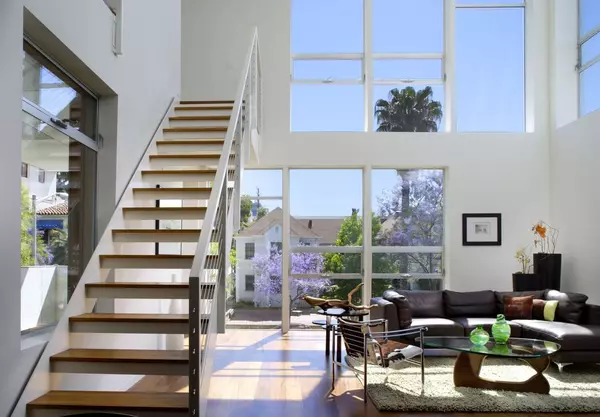
Multiple perspectives on multiplexes: How "missing middle" housing is reshaping Canadian real estate
The term “missing middle” has become as common in today’s real estate vocabulary as “a hot market” or “location, location, location.” Cliches often have some truth in them — and in the case of the “missing middle,” it’s gaining traction in the Canadian real estate market in part due to the rise of a newer property type: multiplexes. Changes in B.C. and Toronto Multiplexes are residential homes that consist of multiple separate units within what would have traditionally been a lot designated for a single detached home. They can generally vary from two to eight units. In 2023, British Columbia made amendments to their Housing Statutes (Residential Development) Amendment Act — more commonly referred to as “Bill 44.” That same year, Toronto’s city council adopted its own Official Plan Amendment and Zoning Bylaw Amendment to allow multiplexes throughout the city. Jasmine Cracknell-Young, vice president of market advisory at Zonda, saw that the rise of multiplex listings in Toronto jumped dramatically since these amendments. According to the Toronto Regional Real Estate Board (TRREB), in 2023 there were 115 listings and in 2024, 168 listings — a 46.1 per cent increase. “I think because housing has become such a hot topic, we have all levels of government finally talking about it because they realize the crisis that we’re in,” she comments. A ‘tiny part of the market’: Legislation may not go far enough Chris Spoke, builder and developer with Toronto Standard, has seen firsthand the impact of these legal changes on housing projects. Personally, he doesn’t believe the legislation goes far enough. “So we have five residential zones in Toronto. Two of those residential zones do support multi-unit housing, but the zoning bylaws paired with the city’s Official Plan and the language of it is if there’s any new development within the neighborhood’s designation, it has to respect and reinforce the existing physical character. (This) means that even if the zoning technically allows for multi-unit housing, if it’s not consistent with the existing physical character, then you’re not going to get past this test,” Spoke explains. “We’ve still not seen a lot of activity because I think the multiplex bylaw doesn’t go far enough in terms of the permissions. So it’s still like a tiny part of the market.” Optimism and opposition: Major Streets Study However, Spoke is optimistic that multiplexes will continue to rise in popularity in Toronto, particularly with the momentum surrounding the Major Streets Study which “focuses on permitting gentle density — missing middle housing — on major streets in low-rise neighbourhoods across Toronto.” “These are the major arterials in the city that have bus routes on them,” adds Spoke. “So this also opened up a new scale of development in parts of the city where it was not legal before.” However, these policies are met with some opposition. When it comes to the Major Streets Policy, traffic is a big concern among current residents. “It’s always traffic,” shares Cracknell-Young. “They just think it’s taking up road space.” Bill 44 in B.C. addresses these concerns by eliminating new vehicles from entering neighbourhoods altogether in some cases: if a housing project is within 400 metres of a transit stop, no minimum parking is required. Transportation accessibility is poised to play a significant role in the development of multiplex housing. Ottawa: Multiplex increases expected post-bylaw approval in 2025 Nachiket Kulkarni, an architectural designer with Architrix Studio, has worked on multiplex projects both in Vancouver and Ottawa, where he now lives. “Ottawa would be two or three years behind Vancouver when it comes to that change,” he says. “So whatever happens in Vancouver right now, the same change would be in Ottawa two or three years down the line in terms of multiplexes.” While Kulkarni has seen a big shift towards more multiplex development over the past couple of years in Ottawa, he anticipates that to increase even further after December 2025, when the new zoning bylaw is expected to have final approval. “In Ottawa, they’ve consolidated the number of zones into just six zones now, just like Vancouver did,” adds Kulkarni. In October 2023, the City of Vancouver implemented a new zoning designation, “R1-1,” otherwise known as “Residential Inclusive.” This was put in place to replace and simplify the previous zoning structure, which included various RS (One-Family Dwelling), RT (Two-Family Dwelling) and RM (Multiple Dwelling) designations. And similar to Toronto and Vancouver, Ottawa’s changes will also aim to reduce parking requirements. ‘Citizen developers’ on the rise Spoke believes that with these new changes, multiplexes will open the door towards something he refers to as “citizen developers:” where those such as home builders, general contractors and even everyday homeowners can actively participate in building up new housing opportunities. “Multiplexes offer a form of development that’s accessible to people who haven’t worked professionally as developers,” Spoke says. While multiplexes will likely not solve all of our housing problems overnight, they provide an opportunity to think of density in a more nuanced manner. “I think it’s a really great product form. You can have multiplexes go into existing communities and have people of different incomes and demographics able to access some of the best communities that we have,” says Cracknell-Young. “To stop the sprawl and have more people in our existing communities where it’s possible … I hope that we will see more of them.” Image: ShapeYourCity.ca

Redefining the Canadian dream: The rise of co-ownership among young Canadians
As real estate professionals, we’re well aware of the challenges facing today’s housing market, especially for younger buyers. Millennials and Gen Z are finding it increasingly difficult to break into the market due to soaring property prices, high interest rates and the ongoing cost of living crisis. However, shared homeownership is emerging as a strategic solution, offering a creative pathway to homeownership that aligns perfectly with current market trends. A shift in homeownership dreams Homeownership has long been synonymous with stability, wealth and personal success — the quintessential Canadian dream. Yet, this dream seems increasingly out of reach for many younger Canadians. A recent BMO survey highlights a significant generational shift, with 68 per cent of Canadians believing that buying a home is less attainable now than it was for their parents. This sentiment is even stronger among Gen Z and younger Millennials, who are navigating an unprecedented affordability crisis. The financial landscape The National Bank of Canada reports that housing affordability has reached record lows, particularly in major urban centres. For example, in Vancouver, the cost of a home has surged to 14.5 times the median household income, while in Toronto it stands at 11.8 times and in Victoria, 10.7 times. Meanwhile, the cost of living has increased substantially, with rent prices in urban centres like Vancouver and Toronto averaging $2,500 to $3,000 per month for a two-bedroom apartment and exceeding $3,500 for single-family homes. These financial pressures highlight the need for innovative solutions to make the dream of owning a home achievable for younger generations once again. The co-ownership advantage Shared homeownership offers many benefits that make it an attractive option for prospective buyers. By dividing the costs of a down payment, mortgage and maintenance fees, this approach makes it possible for individuals to enter the housing market sooner and with less financial impact. Sharing the financial responsibility reduces the risk for each co-owner, making the investment and monthly obligations more manageable. A Royal LePage survey conducted by Leger reveals that six per cent of Canadian homeowners co-own their property with another party, not including their spouse or significant other, and that number is growing. According to a study by Compare the Market, 61 per cent of Canadian respondents expressed willingness to buy a home with friends or family to offset costs. The concept is simple: multiple parties jointly purchase a property, sharing the costs and benefits. One approach to shared homeownership involves parents co-signing mortgages to help their children qualify for better financing, leveraging their financial stability for improved terms and interest rates. This has led to more multigenerational homes, where families either live together or parents provide a financial investment while living separately. Another common structure is Tenancy in Common (TIC), allowing multiple parties to own undivided shares of a property. Each owner holds a specific percentage and has the right to use the entire property, making TIC ideal for friends or family members co-owning a home while maintaining individual ownership stakes. A case study in modern shared homeownership Consider the case of Liane Van Raalte, a Squamish, British Columbia-based realtor. She and her family invested in two presale units at Sokana, a Kerkhoff Develop-Build development in Penticton, B.C. Developments like this go beyond simply providing homes; they offer a lifestyle specifically designed for the new generation of homebuyers. Increasingly, new developments are transforming the concept of co-ownership by including resort-style amenities that elevate the shared living experience. These features make shared ownership even more appealing by providing benefits that individual buyers might struggle to afford on their own. Co-owners can enjoy state-of-the-art co-working spaces, fitness centers, rooftop pools and communal areas, enhancing their overall lifestyle. This approach shows that shared ownership not only makes homeownership more affordable but also enriches the living experience, making it a highly attractive option for today’s younger generation of buyers. For Van Raalte, the decision to invest in Sokana was driven by the development’s unique offerings and blend of practical and luxurious amenities. “We wanted to invest in something with our children that they may potentially live in down the road while starting to build equity now, rather than wait until they are more settled in their lives,” she explains. Key considerations for co-ownership While shared homeownership offers many benefits, it requires careful planning and clear agreements to ensure a smooth experience. Here are some essential factors to consider when counselling clients on co-ownership options: 1. Legal agreements. Advise clients to draft a comprehensive co-ownership agreement. This document should clearly outline each party’s rights and obligations, detail financial contributions and include processes for dispute resolution and exit strategies. A well-drafted agreement is crucial for protecting all parties involved. 2. Financial contributions. Emphasize the importance of clearly defining each party’s financial responsibilities. This includes the initial down payment, mortgage payments, property taxes and ongoing maintenance costs. Clear financial delineation helps prevent misunderstandings and conflicts. 3. Responsibilities and maintenance. Encourage clients to establish a detailed plan for property upkeep and repairs. This ensures that the property is well-maintained and helps prevent disputes over maintenance responsibilities. 4. Exit strategies. Stress the necessity of a well-defined exit strategy. This should cover the process for selling a party’s share of the property, valuation methods and rights of first refusal for remaining co-owners. Having these details sorted in advance can prevent contentious separations. 5. Conflict resolution. Recommend including mediation or arbitration clauses in the co-ownership agreement. These can help resolve disputes amicably and avoid costly legal battles. Understanding and promoting shared homeownership can help you better serve your clients, particularly Millennials and Gen Z. This model not only makes homeownership more accessible but also aligns with the evolving needs and financial realities of younger generations. By embracing innovative approaches like co-ownership, you can help turn the dream of homeownership into a reality for more Canadians.

Multi-Family Investments for Long-Term Real Estate Investment Goals
Multi-family real estate investments offer good opportunities for reliable income and financial stability, when a long-term perspective is taken. Knowing the benefits and challenges of these types of rentals is a critical first step before assessing whether this type of investment is right for you.Multi-family properties include any property with more than one separate housing unit, ranging from duplexes, triplexes, and fourplexes to large apartment complexes.BenefitsWhile multi-family properties may seem a daunting investment to take on, they offer several attractive advantages.Owners can take advantage of economies of scale, as costs for maintenance, management, and utilities are spread across multiple units that are conveniently close together, making these properties more cost-effective to manage than single-family homes. This efficiency can lead to higher profit margins and reduced operational expenses.With multiple rental units, you are not as vulnerable if you have a vacancy. If you have only one or even two separate tenants, and one leaves, that is a major portion of your income. With more tenant groups, that portion of your overall income is smaller, so it is easier to ride out a period of vacancy. Multi-family properties in high-demand urban areas often appreciate well over time. As rental demand increases and neighbourhoods develop, the value of these properties can rise, providing substantial returns on investment in this way, as well.Identifying and Analyzing OpportunitiesTo effectively identify and evaluate multi-family investment opportunities, conduct thorough market research and financial analysis.Focus on emerging areas with strong rental demand, good schools, and accessible amenities. Look for neighbourhoods with low vacancy rates and high rental growth potential. Demographic trends indicating a growing population and stable economic conditions are also important.Evaluate the physical condition of the property; getting a professional appraiser is key. Well-maintained buildings with modern amenities attract high-quality tenants and command higher rents. However, older properties with the potential for cost-effective renovations or upgrades, which could significantly increase their value and rental income, can be worth considering.Metrics to ConsiderCertain critical financial metrics are essential for evaluating the profitability of multi-family properties:Capitalization rates (cap rates) are calculated by dividing the property’s net operating income (NOI) by its purchase price, to highlight potential profitability. A higher cap rate suggests a potentially more profitable investment. Cash-on-cash return evaluates the return on the actual cash invested in the property, indicating how well it generates cash flow relative to the amount of money you invested. A higher number is better for performance and profitability. This metric is especially useful when considering renovation costs for fixer-uppers.The gross rent multiplier is calculated by dividing the property’s price by its gross rental income to assess the potential return relative to rental income. StrategiesThere are some strategies you can follow to maximize the potential of your multi-family investments.Look for properties that can be enhanced through cost-effective renovations or improvements. Upgrading units, enhancing common areas, and boosting curb appeal can attract higher-quality tenants and higher rents and offer a good ROI. Choose renovation and upgrade projects carefully; some, like kitchens and bathrooms, offer a better ROI than others. Energy-efficient upgrades, such as LED lighting and low-flow fixtures, can also reduce operating costs, and appeal to environmentally conscious tenants.Consider properties that could be cost-effectively converted into multi-family units, especially in newly-zoned areas. While initial renovation costs may be higher, the potential for significant income generation makes these investments worthwhile.Scale your portfolio, and reinvest profits from existing properties to acquire additional units, expanding your portfolio and increasing cash flow over time. Diversifying into different types of multi-family properties or new markets can reduce risk and enhance portfolio performance. Regularly update your strategies based on new opportunities and market trends.
Categories
Recent Posts











